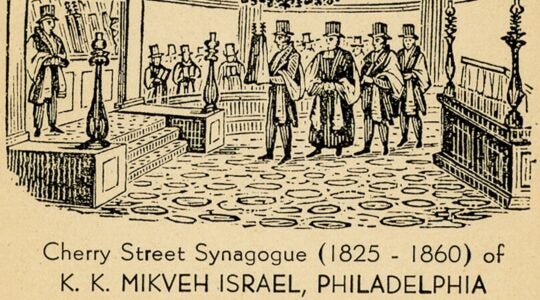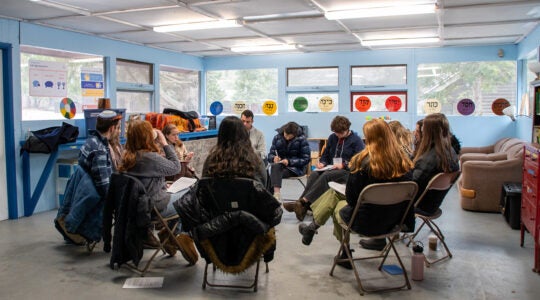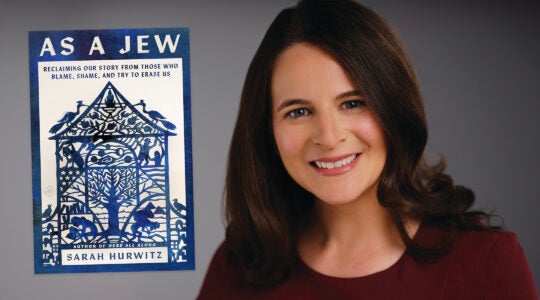The recent Pew Report, “Jewish Americans in 2020,” offers critical insights for stakeholders invested in Jewish education and engagement.
Educators who remain unaware of or indifferent to these insights are at risk of offering a Jewish curriculum that is increasingly irrelevant to growing segments of the Jewish population.
If Jewish educators want to reach more and different segments of the Jewish community, a “Jewish education reset” is warranted. Here are some trends gleaned from the Pew report that should inform this reset:
Jewish peoplehood: Diverse and divergent
The American Jewish population is deeply divided on both religious and political grounds — which are often interrelated. And while the report describes large gaps and rifts between Jews in Israel and America, many Jews claim to have far more in common with Israelis who share their world views than with their fellow Jews here in the U.S.
These gaps are particularly stark between the Orthodox and non-Orthodox, especially haredi Jews and non-Orthodox Jews. For Jewish educators who hold that Jewish collectivity is a major force that binds Jews together, this presents a major challenge.
Coupled with these divides is the dramatically increasing diversity of younger Jews, which also reflects changes in the overall American population. This younger Jewish population is more racially and ethnically diverse than previous generations. This level of diversity creates challenges for a Jewish educational system in America that was mostly developed by and for population perceived as homogenous and Ashkenazi. There will be a lag period between developing a cadre of diverse Jewish educators that both reflects Jewish Generation Z’s diversity and who are effectively trained in a new framework for delivering Jewish education. The pace of this change does not make it any less necessary.
Religion: Beyond the synagogue
The Pew study makes very clear that American Judaism is not only a religion. Younger Jews are less likely to identify as Jews by religion, let alone with any of the traditional Jewish religious movements. Instead they consider themselves Jewish ethnically, culturally or because of their family background.
Many communal leaders continue to claim young people will recognize a need for religious institutions when they advance through life stages, especially if they become parents of young children. The data suggest that major changes in synagogue life must occur for this “return” to come to fruition. The good news is that many synagogues are already taking heed of these trends and adapting accordingly.
Most of Jewish education’s infrastructure, routines and norms were built around religious practice, ritual and ideology. Most Hebrew and Sunday schools, Jewish day schools, summer camps and youth organizations explicitly or implicitly operate as if all Jews believe and live their lives as part of a religious group in America rather than as people who define themselves by Jewish ethnic and cultural
The data challenge the very purpose of Jewish education. If the purpose of Jewish education is not to make young Jews more Jewish along religious criteria, then what is the purpose? Many educators have begun to answer this question with increased focus on youth mental health and wellness, or meaningful volunteer and learning opportunities. The bigger question is whether these examples will be adopted by the broader field of Jewish education — and quickly enough to reflect the changing views and desires of younger Jews.
Israel: A disenchanted generation
Compared to generations for whom 1948 and 1967 were seminal life moments, for the Jewish generations born after 1995 (the year of Yitzhak Rabin’s assassination), Israel does not hold the same place in their minds and heart. While many Jews, including younger Jews, have a strong connection to Israel, Pew indicates that Jewish educational institutions with a pro-Israel agenda will face challenges engaging increasingly larger segments of the American Jewish population.
Pew doesn’t deeply probe the reasons for this shift, but we can make some assumptions. Younger Jews today are largely social progressives and consume the bulk of their information about Israel through legacy media and social media. At best, many young people are ambivalent about the actions of right-wing Israeli governments, which are the only governments of Israel they have known in their lifetimes.
Israel can continue to be important in the lives of many young Jews today. For this to occur, however, Jewish educators need to be trained and continuously supported to teach about Israel with a newfound level of sophistication and with deft knowledge about best practices, which place the learner at the center of the educational experience.
Anti-Semitism and Holocaust: Still relevant
Curricula and initiatives that focus on anti-Semitism and the Holocaust to motivate and galvanize Jewish youth have more recently given way to approaches that harness positive internal factors rather than relying on negative external forces.
Pew signals that Jewish educators (and organizations that support their efforts) might want to re-evaluate this shift. Many Jews say they have experienced antisemitism firsthand and many describe the memory of the Holocaust as critically important to who they are as Jews today. The Holocaust and teaching about antisemitism still have place in Jewish education and the development of Jewish identity.
Jewish families: Unexpected journeys
Pew highlights a Jewish population in America that is stable in overall numbers, but whose composition is changing over time. But perhaps most significantly, the study offers a strong counter to those who have staunchly argued that intermarriage would be the downfall of the Jewish people. Unlike most previous national studies, the 2020 report shows significant numbers of families with only one Jewish parent choosing to raise their children as Jews.
In response, Jewish education must focus on family engagement that not only focuses on how to raise Jewish children, but also on how to welcome non-Jews who are eager partners in this journey.
These trends lead to a larger question: Is the current Jewish educational infrastructure even capable of adapting to these new realities?
If Jewish education continues unchanged it will offer value to only a self-identified, committed core of the Jewish population. Jewish educational institutions that conduct business as they have for the last several decades will not engage any new audiences and will likely go out of business.
But organizations that truly believe that Jewish wisdom, tradition and culture have value to every American Jew will not just need to dramatically change — they will want to change. Working to adapt to these new realities — not only of the new learner but of the new purpose of Jewish education that speaks to this population — will be the greatest challenge to confront Jewish education in the 21st century.
David Bryfman is CEO of The Jewish Education Project.
The New York Jewish Week brings you the stories behind the headlines, keeping you connected to Jewish life in New York. Help sustain the reporting you trust by donating today.




